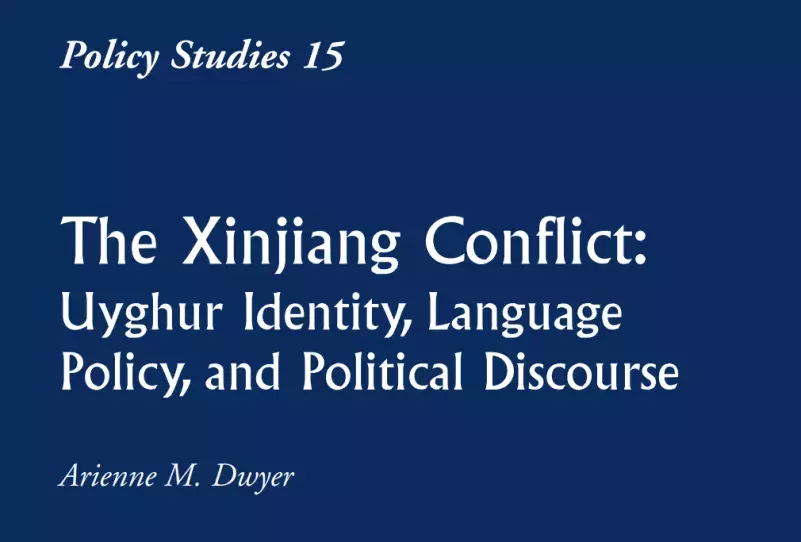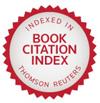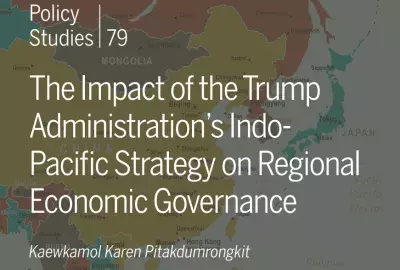Error message

This study explores Chinese language policy and language use in Inner Asia, as well as the relation of language policy to the politics of Uyghur identity. Language is central to ethnic identity, and official language policies are often overlooked as critical factors in conflict over ethnic nationalism. In Chinese Inner Asia, any solution to ethnic conflict will include real linguistic and cultural autonomy for major ethnic groups. Language policy has been at the heart of Chinese nation building. Shortly after the inception of the People’s Republic of China (PRC), language policy in China’s border regions was responsive to local conditions and arguably one of the more flexible in the world. In the last 15 years, however, although China’s official language policy has remained constant, its covert language policy has become increasingly reactive, and tied to geopolitical considerations. This trend has been particularly salient in the Xinjiang Uyghur Autonomous Region (XUAR), where multilingualism and cultural pluralism have been progressively curtailed in favor of a monolingual, monocultural model, and a concomitant rise of an oppositional modern Uyghur identity. This study traces the evolution of the PRC government’s minorities-language policy by evaluating two principal actors (the PRC and the Uyghurs) as well as two peripheral collective actors (first, the newly independent Central Asian republics, and second, North America and Europe). The peripheral groups are relevant to how the PRC has implemented and refined its language policy in border regions. Recent policy shifts in neighboring Central Asian republics (with their Turkic-speaking populations) serve as valuable comparisons with how China has handled its minority-language cases. In contrast, North America and Europe were not relevant for Chinese minority policy until September 2001. But since 9/11, skillful Chinese government media rhetoric has drawn these countries—especially the United States—unwittingly into China’s domestic minority-nationalism issues. The PRC’s original language policy in its border regions, which was integrationist but not assimilative, was well founded and generally well received by both party officials and by the national minorities themselves. Such a pluralistic policy, which arguably supported both national stability and local ethnic groups, stood out positively in comparison with Soviet policies of the time. Yet beginning in the mid-1980s, Beijing began to shift from cultural accommodation towards an overt policy of assimilation. This shift only served to reinforce both Uyghur nationalism and small separatist movements, with potential to undermine the territorial integrity of the PRC and the Chinese effort to build a modern Chinese nation. This policy shift has been counterproductive. Supporting the maintenance of Uyghur language and identity is not antithetical to the Chinese goal of nation building. In fact, it would ultimately support that goal. In addition to the PRC’s overt language policy, including language education and standardization, its covert policy of minority acculturation and assimilation has become more prominent, as reflected in its recent use of discourse characterizing Uyghur nationalist movements as terrorist. The United States, through its so-called “war on terror[ism],” allowed itself to be misled by post-9/11 Chinese media reports on the relationship between the Uyghurs and Islamic militants. In so doing, the United States has conflated Uyghur nationalism with “terrorism,” thus justifying U.S.-Chinese government collaboration in the Chinese Communist Party’s project to suppress its own minorities. Chinese media rhetoric describing Uyghur nationalists before and after 2001 shows a clearly demarcated shift from “separatists” to “Islamic terrorists” as it named over fifty Uyghur “terrorist groups.” Most Western media, which previously had paid little attention to western China, have followed suit, equating these fringe separatist groups with terrorists. Unfortunately, all eight to 10 million Uyghurs have become guilty by association: Washington’s recognition of just one of these separatist groups as officially terrorist has created a climate of mistrust in government and the public against the Uyghurs as a whole. Both Beijing and Washington are about to lose crucial political opportunities in this far-flung territory. Beijing’s new hard-line stance, which restricts even language and culture, has galled the many moderate Xinjiang citizens who once grudgingly accepted Chinese political restrictions as a price of regional economic development. The PRC government still has an opportunity to win back these people with a more pluralistic cultural policy that emphasizes support for Uyghur and other policy-relevant minority languages and that eases other cultural restrictions, particularly on religion. Without such a policy shift, as Beijing well knows, Xinjiang could become China’s Kashmir. Yet if current PRC policy stays on course, any change is likely to be even more restrictive, since the government considers its cultural accommodation of the 1980s and 1990s to be a cause of unrest, rather than a solution to it. The United States, for its part, must make clear to Beijing that current U.S. political imperatives will not distract U.S. policy from supporting human rights, including cultural rights. The Uyghurs have been among the most pro-American citizens in China. They also happen to be Muslims. If the United States wants international partners in fighting terrorism, it should cultivate a cooperative partnership with China, including the Uyghurs. If the Xinjiang region is to be involved in an initiative against international terrorism, then the United States can urge China and its allies to cultivate the Uyghurs—with their knowledge of the language and cultures of Central Asia—as partners rather than as opponents. As Washington has begun to realize, its anti-Uyghur policies, even those targeted only at violent fringe groups, have already generated negative sentiment in Xinjiang towards the United States. Policies perceived as anti-Uyghur or anti-Muslim could well radicalize previously apolitical Uyghurs, pushing them into militant or radical Islamic groups. This negotiation between state policies and ethnoreligious identity occurs within the matrix of language. While the PRC’s official policy remains pluralistic, its unofficial policy has become increasingly assimilative. Such an apparent paradox is readily interpretable if we understand it as the simultaneous implementation of overt and covert policy. In a shift in media discourse from Uyghur separatists to Muslim terrorists, a covert language policy is being applied for international political ends. This manipulation of discourse about the Uyghurs is directly related to China’s overall cultural policy towards its minorities. This study evaluates the theory and implementation of PRC language policy in Inner Asia. Uyghur is situated within a hierarchy of languages within Xinjiang, where it has become a supra-regional language but is clearly subordinate to the national Chinese language. Modernizing a language requires government and societal support for maintaining and diversifying the domains in which a language is used. I examine successes and failures of language policy implementation. Education is closely tied to both overt and covert language policy, and language education policy in Xinjiang reflects the assimilationist trend. Scholastic publishing, school choice, languages of instruction, and language instruction all entail sociopolitical policy decisions that have largely been made in view of economic and political stability, with Chinese materials and instruction rapidly gaining the upper hand. I examine issues in the instruction and use of Uyghur and other native languages, Standard Chinese, and English. Uyghur nationalists, whose reinvigorated sentiment is an unintended result of China’s minorities policy, have been distrustful of and dismayed at China’s apparent intentions for development of the region, which appears to bring yet more monoculturalism in the form of Han favoritism and cultural assimilation. The Uyghur response to language policy thus bears directly on China’s overarching concern of regional stability. I propose policy adjustments that China and the United States might consider to mitigate these effects. This study explores Chinese language policy and language use in Inner Asia, as well as the relation of language policy to the politics of Uyghur identity. Language is central to ethnic identity, and official language policies are often overlooked as critical factors in conflict over ethnic nationalism. In Chinese Inner Asia, any solution to ethnic conflict will include real linguistic and cultural autonomy for major ethnic groups. Language policy has been at the heart of Chinese nation building. In the last 15 years, although China’s official language policy has remained constant, its covert language policy has become increasingly assimilative, and tied to geopolitical considerations. This trend has been particularly salient in the Xinjiang Uyghur Autonomous Region, where multilingualism and cultural pluralism have been progressively curtailed. This has served to reinforce both Uyghur nationalism and small separatist movements, with potential to undermine the territorial integrity of the PRC and the Chinese effort to build a modern Chinese nation. This study argues that both Beijing and Washington are about to lose crucial political opportunities in this far-flung territory. The PRC should realize that supporting the maintenance of Uyghur language and identity is not antithetical to the Chinese goal of nation building. In fact, it would ultimately support that goal; The United States, for its part, should make clear to Beijing that current U.S. political imperatives will not distract U.S. policy from supporting human rights, including cultural rights, and seek to cultivate a cooperative partnership with China, including the Uyghurs. | Additional titles in the Policy Studies series |

This study explores Chinese language policy and language use in Inner Asia, as well as the relation of language policy to the politics of Uyghur identity. Language is central to ethnic identity, and official language policies are often overlooked as critical factors in conflict over ethnic nationalism. In Chinese Inner Asia, any solution to ethnic conflict will include real linguistic and cultural autonomy for major ethnic groups. Language policy has been at the heart of Chinese nation building. Shortly after the inception of the People’s Republic of China (PRC), language policy in China’s border regions was responsive to local conditions and arguably one of the more flexible in the world. In the last 15 years, however, although China’s official language policy has remained constant, its covert language policy has become increasingly reactive, and tied to geopolitical considerations. This trend has been particularly salient in the Xinjiang Uyghur Autonomous Region (XUAR), where multilingualism and cultural pluralism have been progressively curtailed in favor of a monolingual, monocultural model, and a concomitant rise of an oppositional modern Uyghur identity. This study traces the evolution of the PRC government’s minorities-language policy by evaluating two principal actors (the PRC and the Uyghurs) as well as two peripheral collective actors (first, the newly independent Central Asian republics, and second, North America and Europe). The peripheral groups are relevant to how the PRC has implemented and refined its language policy in border regions. Recent policy shifts in neighboring Central Asian republics (with their Turkic-speaking populations) serve as valuable comparisons with how China has handled its minority-language cases. In contrast, North America and Europe were not relevant for Chinese minority policy until September 2001. But since 9/11, skillful Chinese government media rhetoric has drawn these countries—especially the United States—unwittingly into China’s domestic minority-nationalism issues. The PRC’s original language policy in its border regions, which was integrationist but not assimilative, was well founded and generally well received by both party officials and by the national minorities themselves. Such a pluralistic policy, which arguably supported both national stability and local ethnic groups, stood out positively in comparison with Soviet policies of the time. Yet beginning in the mid-1980s, Beijing began to shift from cultural accommodation towards an overt policy of assimilation. This shift only served to reinforce both Uyghur nationalism and small separatist movements, with potential to undermine the territorial integrity of the PRC and the Chinese effort to build a modern Chinese nation. This policy shift has been counterproductive. Supporting the maintenance of Uyghur language and identity is not antithetical to the Chinese goal of nation building. In fact, it would ultimately support that goal. In addition to the PRC’s overt language policy, including language education and standardization, its covert policy of minority acculturation and assimilation has become more prominent, as reflected in its recent use of discourse characterizing Uyghur nationalist movements as terrorist. The United States, through its so-called “war on terror[ism],” allowed itself to be misled by post-9/11 Chinese media reports on the relationship between the Uyghurs and Islamic militants. In so doing, the United States has conflated Uyghur nationalism with “terrorism,” thus justifying U.S.-Chinese government collaboration in the Chinese Communist Party’s project to suppress its own minorities. Chinese media rhetoric describing Uyghur nationalists before and after 2001 shows a clearly demarcated shift from “separatists” to “Islamic terrorists” as it named over fifty Uyghur “terrorist groups.” Most Western media, which previously had paid little attention to western China, have followed suit, equating these fringe separatist groups with terrorists. Unfortunately, all eight to 10 million Uyghurs have become guilty by association: Washington’s recognition of just one of these separatist groups as officially terrorist has created a climate of mistrust in government and the public against the Uyghurs as a whole. Both Beijing and Washington are about to lose crucial political opportunities in this far-flung territory. Beijing’s new hard-line stance, which restricts even language and culture, has galled the many moderate Xinjiang citizens who once grudgingly accepted Chinese political restrictions as a price of regional economic development. The PRC government still has an opportunity to win back these people with a more pluralistic cultural policy that emphasizes support for Uyghur and other policy-relevant minority languages and that eases other cultural restrictions, particularly on religion. Without such a policy shift, as Beijing well knows, Xinjiang could become China’s Kashmir. Yet if current PRC policy stays on course, any change is likely to be even more restrictive, since the government considers its cultural accommodation of the 1980s and 1990s to be a cause of unrest, rather than a solution to it. The United States, for its part, must make clear to Beijing that current U.S. political imperatives will not distract U.S. policy from supporting human rights, including cultural rights. The Uyghurs have been among the most pro-American citizens in China. They also happen to be Muslims. If the United States wants international partners in fighting terrorism, it should cultivate a cooperative partnership with China, including the Uyghurs. If the Xinjiang region is to be involved in an initiative against international terrorism, then the United States can urge China and its allies to cultivate the Uyghurs—with their knowledge of the language and cultures of Central Asia—as partners rather than as opponents. As Washington has begun to realize, its anti-Uyghur policies, even those targeted only at violent fringe groups, have already generated negative sentiment in Xinjiang towards the United States. Policies perceived as anti-Uyghur or anti-Muslim could well radicalize previously apolitical Uyghurs, pushing them into militant or radical Islamic groups. This negotiation between state policies and ethnoreligious identity occurs within the matrix of language. While the PRC’s official policy remains pluralistic, its unofficial policy has become increasingly assimilative. Such an apparent paradox is readily interpretable if we understand it as the simultaneous implementation of overt and covert policy. In a shift in media discourse from Uyghur separatists to Muslim terrorists, a covert language policy is being applied for international political ends. This manipulation of discourse about the Uyghurs is directly related to China’s overall cultural policy towards its minorities. This study evaluates the theory and implementation of PRC language policy in Inner Asia. Uyghur is situated within a hierarchy of languages within Xinjiang, where it has become a supra-regional language but is clearly subordinate to the national Chinese language. Modernizing a language requires government and societal support for maintaining and diversifying the domains in which a language is used. I examine successes and failures of language policy implementation. Education is closely tied to both overt and covert language policy, and language education policy in Xinjiang reflects the assimilationist trend. Scholastic publishing, school choice, languages of instruction, and language instruction all entail sociopolitical policy decisions that have largely been made in view of economic and political stability, with Chinese materials and instruction rapidly gaining the upper hand. I examine issues in the instruction and use of Uyghur and other native languages, Standard Chinese, and English. Uyghur nationalists, whose reinvigorated sentiment is an unintended result of China’s minorities policy, have been distrustful of and dismayed at China’s apparent intentions for development of the region, which appears to bring yet more monoculturalism in the form of Han favoritism and cultural assimilation. The Uyghur response to language policy thus bears directly on China’s overarching concern of regional stability. I propose policy adjustments that China and the United States might consider to mitigate these effects. This study explores Chinese language policy and language use in Inner Asia, as well as the relation of language policy to the politics of Uyghur identity. Language is central to ethnic identity, and official language policies are often overlooked as critical factors in conflict over ethnic nationalism. In Chinese Inner Asia, any solution to ethnic conflict will include real linguistic and cultural autonomy for major ethnic groups. Language policy has been at the heart of Chinese nation building. In the last 15 years, although China’s official language policy has remained constant, its covert language policy has become increasingly assimilative, and tied to geopolitical considerations. This trend has been particularly salient in the Xinjiang Uyghur Autonomous Region, where multilingualism and cultural pluralism have been progressively curtailed. This has served to reinforce both Uyghur nationalism and small separatist movements, with potential to undermine the territorial integrity of the PRC and the Chinese effort to build a modern Chinese nation. This study argues that both Beijing and Washington are about to lose crucial political opportunities in this far-flung territory. The PRC should realize that supporting the maintenance of Uyghur language and identity is not antithetical to the Chinese goal of nation building. In fact, it would ultimately support that goal; The United States, for its part, should make clear to Beijing that current U.S. political imperatives will not distract U.S. policy from supporting human rights, including cultural rights, and seek to cultivate a cooperative partnership with China, including the Uyghurs. | Additional titles in the Policy Studies series |








